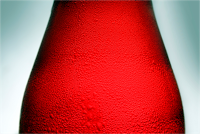
Be Aware of “Black out in a can” or “Liquid Cocaine?”
December 2, 2010
Lately, there has been much attention given to a new version of alcoholic drinks that are gaining popularity. The specific brands cited are Four Loko, Joose, Max and Torque combine large does of alcohol with caffeine. These drinks are marketed to youth, with colorful packaging and flavors including grape, fruit punch, watermelon, and lemonade. Four Loko is said to contain the alcohol equivalent of up to five beers (12 percent alcohol) and the caffeine of one cup of coffee plus a can of Red Bull. The caffeine buzz delays the ability to feel the effect of the alcohol or monitor their body’s response. Before the drinker is aware, they have consumed several beers at once and are on a caffeine high, increasing the likelihood of alcohol poisoning. Because alcohol poisoning is so frequent after drinking these drinks, the term “black out in a can” has become a common nickname for these alcohol energy drinks.
These drinks first caught the attention of doctors, hospitals, police, and government officials as they began to warn the public of the dangers the drinks pose and tried to force changes in packaging, warnings and content. The containers look attractive and to the unknowing eye could easily mistake the beverage for an energy drink. The terms “liquid cocaine” or “cocaine in a can” are also used as slang for these drinks, because of the high amount of caffeine, taurine and guarana. The risk of caffeine intoxication is high and symptoms after consuming the drink include restlessness, increase in blood pressure, heart rate and heart palpitations. Emergency Room doctors report that patients are coming into hospitals drunk and also complaining that their hearts are pounding out of their chests.
But now, the alarm level has risen, as college and university campuses across the United States are banning the drinks as well. The University of Florida conducted a study published in the journal Addictive Behaviors. The study found that of the patrons exiting bars, those who drank energy drinks mixed with alcohol were three times at risk of leaving a bar highly intoxicated and were four times more likely to intend to drive after drinking than bar patrons who drank alcohol only. “There’s a very common misconception that if you drink caffeine with an alcoholic beverage the stimulant effect of the caffeine counteracts the depressant effect of the alcohol and that is not true,” said study co-author Bruce Goldberger a professor and director of toxicology in the UF College of Medicine. “We know that caffeine aggravates the degree of intoxication, which can lead to risky behaviors.” ABC News interviewed Doctor Mary Claire O’Brien of Wake Forest University on the study she conducted on the effects of combining alcohol and caffeine. Her results showed that students who mix caffeine and alcohol are “twice as likely to be injured, require medical attention, ride with an intoxicated driver, and more than twice as likely to take advantage of someone sexually.”
Colleges are not the only ones to feel the effects. Nickie Gorce, Director of Prevention with EPIC Community Services, has seen a large increase in alcohol-related referrals to her agency. Many of the referrals are for youth and young adults under the legal drinking age of 21. “Their impulsive behavior after consuming these types of drinks would appear to be out of control, which is frequently the result when adolescents or young adults binge drink (5 or more drinks in rapid succession). The increased risk taking behavior such as driving under the influence is an unintended outcome when individuals consume alcohol energy drinks. In addition, the Blood Alcohol Content (B.A.C.) level after consuming just one of these beverages like Four Loko may be twice the legal limit.”
With both the alcohol and caffeine being diuretics, dehydration is another real risk leading to other health complications as well, including a terrible hangover. When the intoxication effects wear off, not only do you have a crash from the high doses of alcohol, there is also a caffeine crash that occurs with most people.
Several states, including Michigan, Washington, Utah, Oklahoma and New York have banned the sale of these drinks and some vendors are voluntarily removing them from the shelves. As the safety concerns mount, the Food and Drug Administration has been reviewing the products and has stated they want the drink in its current state to be removed from shop shelves by December 13.
